How We Took a Failing Funnel From $3976 to $20415 in 3 Weeks

By DAWN-MARIE NESBITT
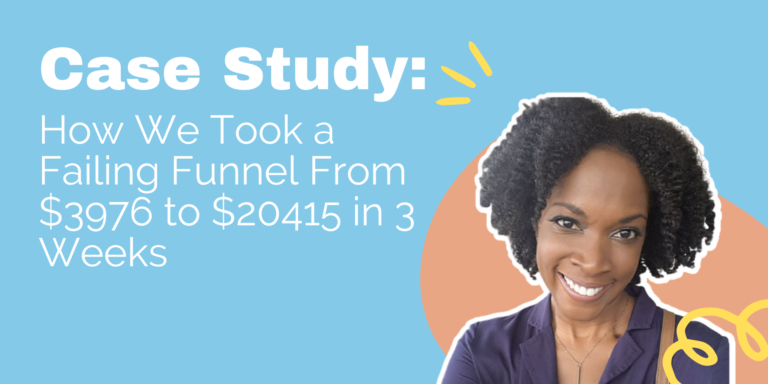
I’ve been working with a new client to help them launch a new product as part of their wider funnel.
To give you some background into what they do. My client is a therapist and now trains other therapists and practitioners so they will learn the techniques to attracting their first client.
Their students who enrol in their new program are typically those who have just qualified as a practitioner or therapist, or who have had a business for sometime but want to learn current techniques to attracting clients.
My goal was to build an end-to-end funnel that sold their lower end product and then upsell students into a higher end product.
The lower end product is a self-paced course whilst the higher end product is a group coaching program.
As we started working on the funnel, I understood that they had students who were taking part in both the lower end and higher end products. But you will see from this case study, in order for a sales funnel to be successful, it has to be able to sell well. Later on I will explain more about what I mean.
This case study is useful if you want to:
- You’re a coach or someone who wants to launch a product to an email list
- You have heard of email marketing and want to know where to start
- You have tried email marketing to sell a product but failed
Should You Use Paid Ads Or Free Traffic To Launch A Sales Funnel?
The goal for this funnel was to produce at least $100k in revenue from the sale of a self-paced course. My client wanted to use Facebook Ads to start testing the funnel, but I suggested that as they already had an email list of over 500k subscribers that we start there.
This was a good idea to see how the funnel performed by using free traffic. That way we could see the potential for the funnel and if it would work when we ran paid ads to it.
Another issue that we had to work out with the subscribers was how to segment it. Subscribers included both B2C and B2B subscribers.
Some purchased my client’s other products but there was one particular segment that was of interest to me, which was the segment that included people who were therapists or practitioners or the like and opted into one of my client’s existing funnels to learn how to train as a therapist.
This segment was ideal, since it matched the customer avatar – that is, anyone who is a therapist or practitioner or coach and wants to learn how to market their business.
Once the segment was identified, I went on to consider the actual funnel – the user journey.
Key Takeaway:
Test a new funnel on an existing email list or acquired traffic such as website visitors. That helps you to see how the funnel will convert before you take it to market with paid ads. Plus it is more cost effective and cheaper to test a new funnel on people that already know about you and are likely to buy from you.
Planning The Funnel And The User Journey
The funnel that we built was a webinar funnel. I thought because the product that was on offer was $497, that with a webinar, we could really provide value with high-impact educational content, that taught something and then lead the attendee into the pitch for the product.
This way it doesn’t seem like a direct pitch, but we could really touch on the pain points and challenges of the target audience and teach them what they may not know, so it makes sense that the next obvious step is to purchase the product.
My client liked this idea and so I set off to build the actual funnel.
As our traffic source was an email list, the journey for the subscriber would be to visit a landing page where a webinar was hosted. The call to action on the webinar was to purchase the product.
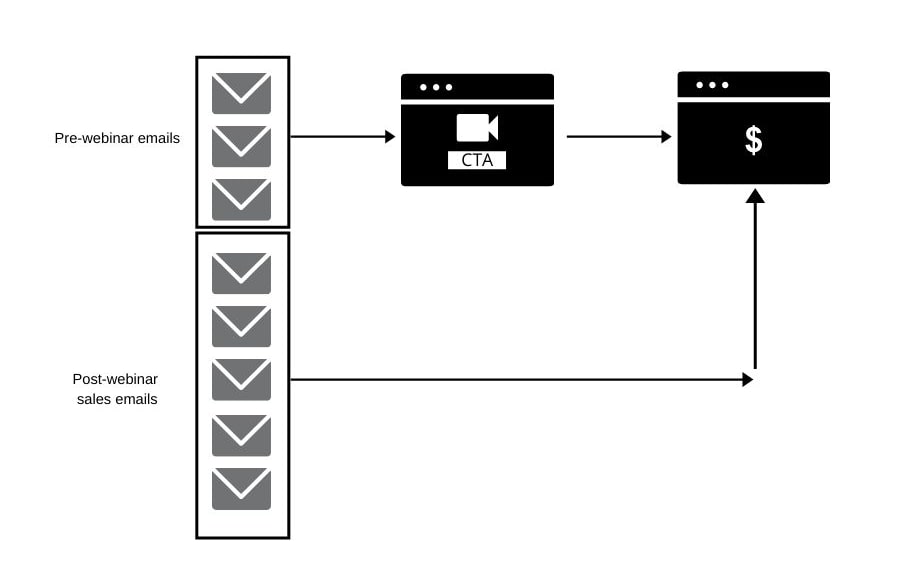
The result of this funnel over a period of two weeks however was a disappointing 8 sales.
To give you some context. We emailed 114119 subscribers. My client’s list had an open rate of 17% and a CTR of 3%. However only 39% of the webinar was watched and from that the funnel produced 8 sales within 2 weeks.
It’s important to note that the main part of the funnel, which is the webinar, was where, in my opinion, the funnel broke.
Analysing The Performance Of A Sales Funnel
When analysing the performance of a funnel, you should carefully look at the different pieces to see whether it meets industry standards or if not industry standards, the standard for the business all over.
When I studied the average email performance rates for this client’s business, I saw that on average they had an open rate of 19% and CTR of 6%, so the performance of their emails for this funnel was on average.
I do believe that their email open rates could be improved if they cleaned their list because industry standards according to Campaign Monitor suggests that a high performing email list would have an open rate of 21% and a CTR of 15%.
The next problem for this funnel was the webinar.
The webinar was 46 minutes long but people were only looking at 16 minutes of the webinar. This is important to note because the content of the webinar was such that the introduction of the product and the call to action came after the 16 minute mark.
If people were not looking past 16 minutes, they would not have known about the product in order to buy it.
Another problem with the webinar was that it was not persuasive. My client wanted to promote their self-led course but the success rate of the course was very low.
The engagement rate in the course was also very low. So my question to the client was, how can you persuade a group of people to invest in a product that was not successful in helping the students achieve their desired outcomes?
And the answer to this question led to my client pivoting to promoting a product that was more successful.
This teaches us two things, something which I say over and over again:
- A sales funnel is only as good as the product it’s promoting
- A sales funnel or paid ads will not solve a broken product
Now that you know the background of the funnel, let’s talk about how we set up both and what we did to achieve the results we had.
Key Takeaway:
People are motivated to buy, based on the outcomes of other people. If you can therefore show that your product or service produced excellent results for a group of people, then you're more likely to convince other people that it works and the more likely your sales funnel will convert and be successful.
Setting Up The Sales Funnel
The first funnel promoted the sale of an ecommerce product via a ThriveCart checkout. This funnel started by promoting a series of emails to a warm audience.
Two emails were sent to the segment with the goal of introducing the product via a webinar.
The goal with these emails was to establish interest in the product by observing which subscribers opened or clicked on the link in the email to watch the webinar.
Subscribers who clicked on a link within the entire email campaign, were segmented as potential warm leads, since by clicking a link, it can be assumed that you were so inspired by the email copy, that you had to click on the link to check out the promoted webinar.
From the segment of people who clicked on the webinar link within the emails, we continued to send a series of five sales emails, to nurture and share more about the product to encourage them to visit the checkout page to purchase.
When I analysed the last emails in the funnel (those sent to all the clickers), what I found was that the engagement rate was poor.
In one email we had an open rate of 16% with a CTR of 6.47%.
In another email we had an open rate of 4% and a CTR of 0%.
My conclusion from this campaign was that the clickers of the webinar video were not very inspired by the actual webinar and so were not excited to receive further emails about the product from us.
When I relayed my observations to the client, they agreed that the product was not the strongest and this reflected in the performance of the webinar.
Pivoting And How We Rescued A Failed Funnel
As our first launch didn’t go as we expected, we decided to try a different funnel to a different product (a coaching program) and this is where things became pretty interesting.
The coaching program was actually more intensive than the first product and was the choice to be upsold in the first funnel.
My client decided to pivot to promote the coaching program, since she was confident that it would sell easily, since previous students had excellent results from the coaching and their testimonials would prove that.
My client wanted 30 sales of the coaching program to call it a successful campaign.
I therefore had the task of building a new funnel for this product and here was my idea.
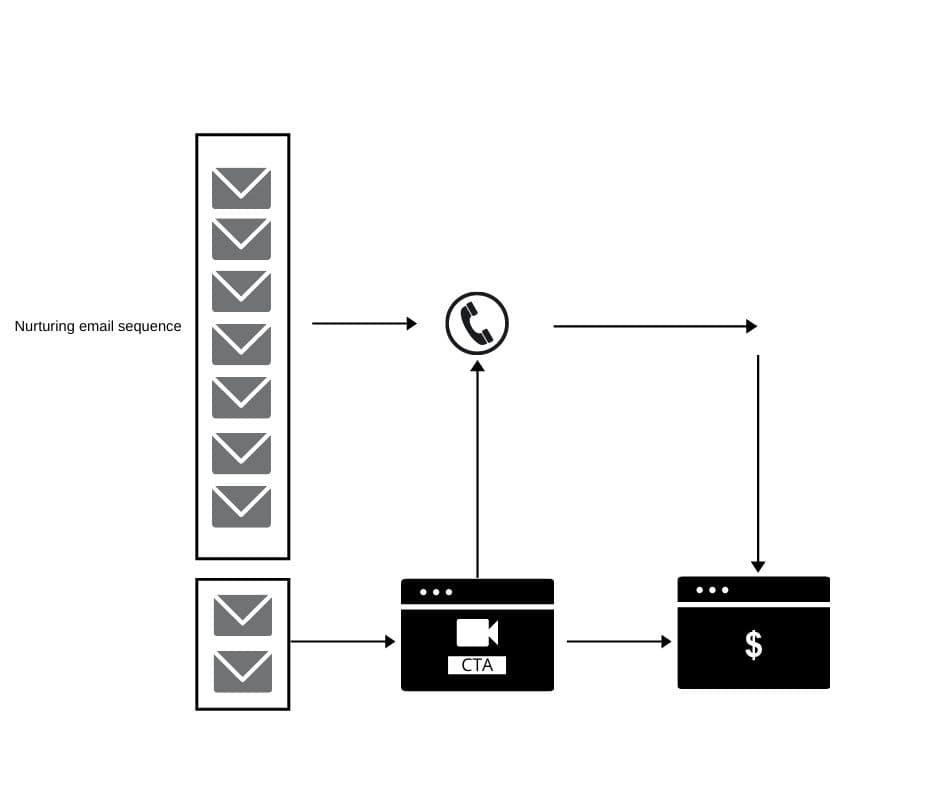
The product was to be sold at $997 to a new audience – people who were already members of the first self-led course and got it for free. The goal was to encourage those members to buy in to the coaching program.
The funnel would therefore go like this.
A series of seven nurturing emails were sent to this segment with the goal to book a call to talk to a sales team about the product.
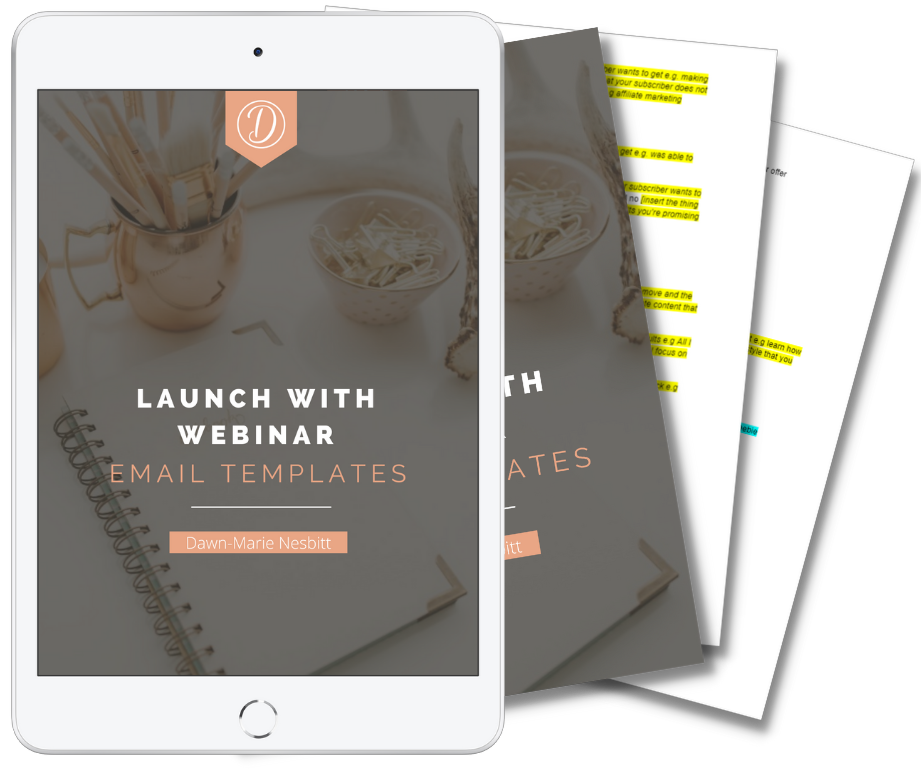
Get The Webinar Email Templates
Get Access To My 10-Day Launch Series Fill-In-The-Blanks Email Templates (that helped my client overcome a failed launch and go on to successfully sell out their programme) (Valued at $2470)
Although I recommended to the client that we should send the audience to an ecommerce page to purchase the product directly, my client preferred to use their sales team to test how that would perform.
I did believe that using a sales team would actually reduce sales conversions because it made it more difficult for the subscriber to actually purchase the product if they wanted to without speaking to someone.
I also suggested that we give both options to the subscriber in our emails, but my client decided otherwise.
How We Went From A 43% Sales Close Rate To A 100% Close Rate
Here’s what happened.
When people booked a call with the sales team, we found that the sales team were not adequately trained on the product to answer questions about it.
We also found that they were not able to properly manage subscriber’s objections to the product.
This affected sales and there was a conversion rate of 43% call taken to sale.
Now some might say that this is an excellent conversion rate, but what we did next boosted the conversion rate to 100%.
If you were able to close all the calls that you got in a phone call, would you take that as opposed to just 43%?
So here’s what I suggested we do to achieve a 100% sales close rate.
I thought that since the sales team were not properly trained on the product, if we hosted a live webinar and answered all the questions that subscribers might have about the product and show them examples of previous students who performed well, that this may have an effect on conversion rates.
The client therefore hosted two subsequent webinars, that explained more about the product and also reassured subscribers about what they were getting and how we could help them. They were also able to ask any questions and get the answers to help them address any concerns.
After hosting the webinar and from the comments that I saw in the webinar itself, I knew that if we included an option for subscribers to make an instant purchase through an ecommerce option, that this would make a difference.
I therefore suggested this to my client and we decided to test it and see how it would perform.
As expected, the percentage of sales closed increase to 100% and our checkout page had a conversion rate of 10%. According to FindStack, an email funnel can produce on average 2-5% conversion rate from webinar attendance to sales. As we were able to achieve a 10% conversion rate I was pretty happy with this.
In the end, the final results for this funnel was 33 students joined the coaching program and a revenue total of $20415 with a final expected revenue of $32901 since some students opted for payment plans.
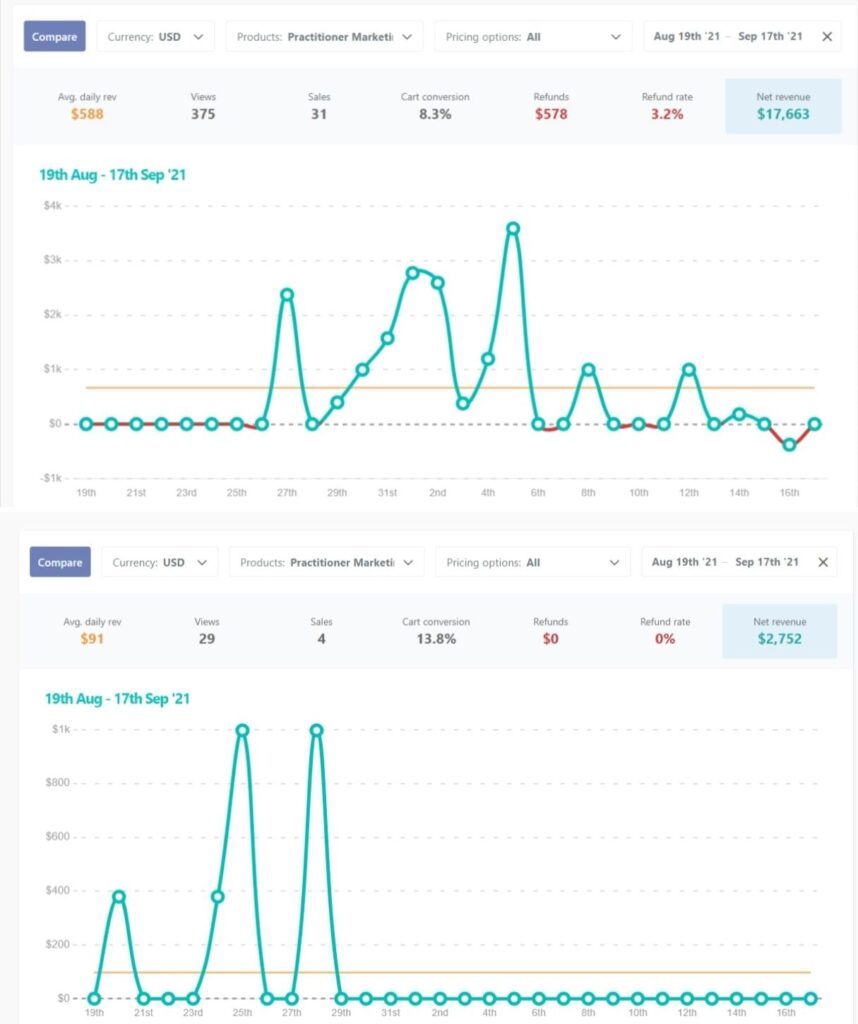
Wrapping Up
From this campaign we were able to rescue a failed launch and turn it into a more successful one, by focusing our efforts on promoting a product that provided good outcomes for students and also one where we could leverage testimonials and reviews from students.
We were also able to turn around a potentially poor campaign outcome by hosting a live webinar and interacting with subscribers to help get them off the fence with any concerns that they may have.
In fact, one subscriber even said that the sales team needed training as they couldn’t answer her questions.
This alone made the case for why live webinars are powerful to help conversions.
Key Takeaway:
Treat your subscribers as real people and you will likely have a successful funnel. If the results from a funnel launch has not produced expected results, consider whether a live webinar that encourages human interaction could take subscribers off the fence and towards making a purchase. Not everything has to be automated.

Launch With Webinar Email Templates
Get Access To My 10-Day Launch Series Fill-In-The-Blanks Email Templates (that helped my client overcome a failed launch and go on to successfully sell out their programme) (Valued at $2470)